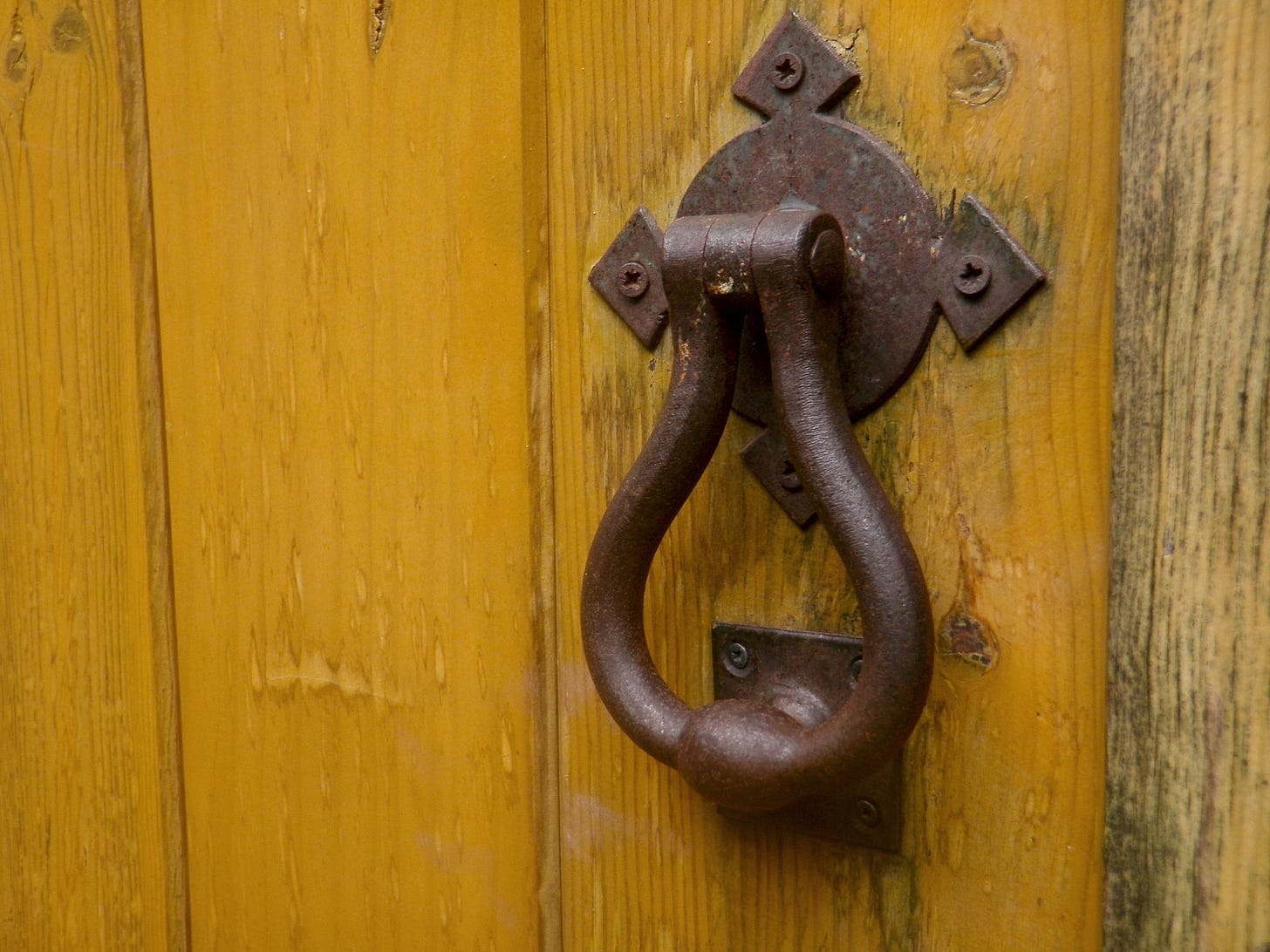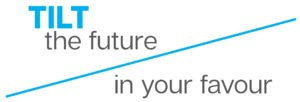“When you are tired of saying it, they are just starting to hear it.”
— Jeff Weiner, LinkedIn ex-CEO
I had three different conversations recently - with a podcaster, a fellow writer and a workshop creator - that all rolled up to this one question
How do we find and get heard by our audience?
In a previous universe, while in our entrepreneur phase, my husband and I ran a painting franchise.
Part of creating a pipeline of summer painting jobs is to go door-to-door cold-calling in the winter months. We spent many Saturday mornings in February, March and April physically knocking on doors.
Your feet are aching from trudging up and down the long snowy driveways. Your teeth chatter involuntarily with the cold. Your smile sticks frozen to your face. The last thing you want is to have the door smacked shut on you.
To increase brand recognition and turn these into warm leads the franchise tutored us in a simple strategy, they called
Warm up the neighbourhood
The underlying premise is to create familiarity, so that a NO becomes a friendly “Not yet, but you’ll be the first we call when we need painting.”
Warming the neighbourhood is a multi-layered strategy of getting your name/message in front of the client way before your hand hits that door knocker. And to Jeff Weiner’s point, in today’s market over saturated with signals, it is ok to shout a little longer and louder than is comfortable.
“When you are tired of saying it, they are just starting to hear it.”
— Jeff Weiner, LinkedIn ex-CEO
Warm up the neighbourhood.
Identify the set of streets you want to cold-call.
Four weeks before you knock on the door, send out flyers in the mail (yes those annoying pieces of paper). Even while someone is tossing them in the garbage, they notice a logo or a phrase.
Three weeks before you knock on the door - plant lawn signs at the intersection of every turn-off from the highway leading to that sub-division, so that the primary decision maker registers the logo and name of your company.
Two weeks before you knock on the door - plant lawn signs at the cross sections off the main road leading into the 4-5 streets that you will be canvassing.
One week before you knock on the door - plant lawn signs at each end of the streets you have set up to visit.
On the Thursday before, put door hangers on the front door knob of every home. These show your company name and logo. “Are you planning any indoor or outdoor painting this year? We will be knocking on your door this Saturday. If we will miss you due to your schedule and you’d like an appointment for a free estimate, please call this number xxx-xxxx.” You set the stage for curiosity. The home-owners now entertain the thought about painting as they stare at the stains on the ceiling when the coke bottle blew its top, notice the dents on the wall where the hockey sticks keep hitting, or as their headlights highlight their grungy garage door.
We have now already created a relationship before we knocked on their door on Saturday morning interrupting their coffee and croissant. It is not the first time they have considered this question this week. We are more likely to be greeted with a smile as they say “Sorry, don’t need it this year. I’m holding onto your number.” And if we are lucky, we walk away with an appointment to offer them an estimate.
What does this have to do with writing?
I reuse-recycle this strategy with my writing. If I have a big message to communicate, I first warm up my audience. I drop teasers. I break it into bits. I seed the soil with ideas, creating curiosity around the concepts, dribbling phrases to develop familiarity.
I had a big idea that would challenge the way we think. In its first five iterations, the thought process crossed the 5000-word mark. My peer editors who struggled through the entire piece found it incredibly eye-opening. At their recommendation, I started dropping “lawn signs and flyers” a few weeks before:
E64: Shifts seep into existence planted the concept of the gradual way we change in response to the technologies developed to help us
E65: History Smooshes Stuff approached the concept of compression in describing changes in history. The engagement in the comments and on LinkedIn showed that it hit a nerve.
E66: Becoming talked about the liminal state while we make a state change.
After warming up the neighbourhood, allowing the ideas to ferment in the mind of my readers, I showed them the way I am scanning the terrain, and offered some ideas on how we can manage while we navigate this new world. The open rate was over 60% and it drove a number of discussions across various platforms.
Mind the [].. Generation ..[] Gap
The next few generations will live their entire lives with 👣 one foot in the Industrial Era, and the other 👣 in the Intelligence Era. If there is one idea I want you to leave with, it is this: Strap in. It’s going to be a long while before we settle back into a new normal. Multiple decades. If you think our
I am also no longer embarrassed to spin the kaleidoscope on a topic I’ve addressed in the past. Rest? Future of Work? 21st-century skills? The parenting arc? It’s ok to revisit the idea from a different angle.
“When you are tired of saying it, they are just starting to hear it.”
— Jeff Weiner, LinkedIn ex-CEO
It is about developing my continuing relationship with you.
I’m always curious. If this strategy happens to unlock a mind shift for you in your own work, DM and share the details!
Free Write of Passage Workshops
“How do you bring such an engaging spin to your writing? And how do find the discipline to produce a regular newsletter with everything else going on in your life?” I’d asked Wharton Professor
who writes as I was struggling with my process. That is how I discovered Write of Passage. He could not stop crediting their unique Writing Sprints (previously called Crossfit for Writing).I’d already spent many hours and more than a few thousand dollars on classes focused on marketing, messaging and developing content. What was different about Write of Passage? Why did it work where other noteworthy classes hadn’t moved the needle?
Everyone came with high expectations and high commitment to participate.
I learned the art of offering constructive criticism that supported the work of my peer-learner, helping them grow. This discussion was more than the participation medal/high fives I’d been dishing out in other programs. As a result, I saw the holes in my own writing and got better at self-editing.
The content was well researched and presented. I came for the content and process. But I stayed for the community. A collection of “beautiful minds”.
Sign up for one of these free workshops if you’d like a peek at how this works. Odds you will discover one thing you didn’t know before. If either of these excite you, Cohort 11 launches on October 5 and enrollment opens September 12-25.
Bursting to share the wisdom that sits between your ears, want to bring personality to your writing, need to figure out where to draw inspiration for your writing? Do this one:
Tuesday, September 12th at 7pm ET - How to Start Writing Online: https://bit.ly/TilttheFuture-WoP-WriteOnlineWorkshop
No longer want to spend half your week working on your newsletter and need a more imaginative process? This is version of the Writing Sprints. Try it out:
Thursday, September 21st at 12pm ET - Test Drive Write of Passage: https://bit.ly/TilttheFuture-WoP-TestDriveWorkshop
I plan on being there as a participant.
Welcome to our new Tilt Tribe members from Australia, Canada and the US. You join this rich community that believes in the best of humanity - connecting people, sharing ideas, and exploring thoughts respectfully. And we believe we can make a difference to the people and places that are precious to us.
Is this your first visit to Tilt the Future? Come join us by hitting this button below:
See you next week. Stay healthy. From there all else becomes possible.
Karena





![Mind the [].. Generation ..[] Gap](https://substackcdn.com/image/fetch/$s_!Hu3I!,w_280,h_280,c_fill,f_auto,q_auto:good,fl_progressive:steep,g_auto/https%3A%2F%2Fsubstack-post-media.s3.amazonaws.com%2Fpublic%2Fimages%2F2e47cfa5-9392-4b24-a70c-c1ace7bd6388_6000x2536.jpeg)

That was SO useful Karena! The whole "warm up the neighborhood" idea is brilliant, simple, and so cross-applicable to the stuff I'm working on right now. Perfect timing. And this quote says it so well, "“When you are tired of saying it, they are just starting to hear it.”
— Jeff Weiner, LinkedIn ex-CEO"
Woah! I was JUST thinking today that I'm growing a bit tired of posting videos on YouTube (more like, I'm thinking "what's the point?"), but now I realize I just need to continue on because they are just starting to hear it.